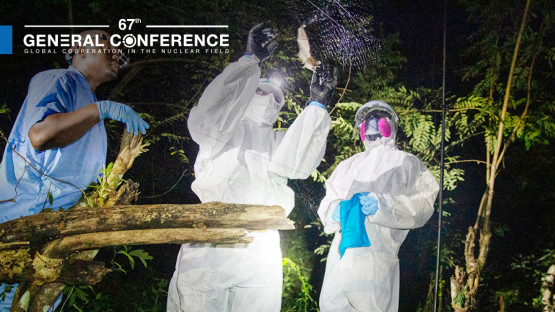The COVID-19 disease is caused by the COVID-19 virus. In early 2020, its global spread was declared a Public Health Emergency of International Concern and then a pandemic by the World Health Organization (WHO). One of the most widely used methods for detecting the virus is a nuclear-derived technique called reverse transcription – polymerase chain reaction.
COVID-19
The coronavirus disease (COVID-19) is caused by severe acute respiratory syndrome coronavirus 2 (SARS-CoV-2), which is also known as the COVID-19 virus. After the first ever reports of COVID-19 in December 2019, the disease spread rapidly. In January 2020, the WHO declared the outbreak a Public Health Emergency of International Concern, and by March 2020, the WHO characterized the outbreak as a global pandemic.
The COVID-19 virus is of zoonotic origin, which means it jumped from animals to humans and has since spread between humans. It is primarily spread from an infected person through saliva droplets or discharge from the nose. For most people, the virus infection causes mild to moderate respiratory illness and recovery does not require special treatment. For older people and those with underlying medical problems, the virus is more likely to lead to serious illness.
A key part of containing the outbreak caused by diseases, such as COVID-19, is diagnostic testing. One of the fastest and most accurate detection methods for the COVID-19 virus is a nuclear-derived technique called real time reverse transcription–polymerase chain reaction (real time RT–PCR). Learn how real time RT–PCR works.
Real time RT–PCR is one of the most widely used laboratory methods for detecting the COVID-19 virus. While many countries have used real time RT–PCR for diagnosing other diseases, such as Ebola and Zika, many need support with adapting the method for the COVID-19 virus and increasing their national testing capacities. Over 100 countries requested support from the IAEA in detecting and controlling the increasing number of COVID-19 infections, including with real time RT–PCR. The IAEA, in part through funding contributions from Member States, provided a range of support, from diagnostic equipment and protective gear to sharing of expertise and training.








